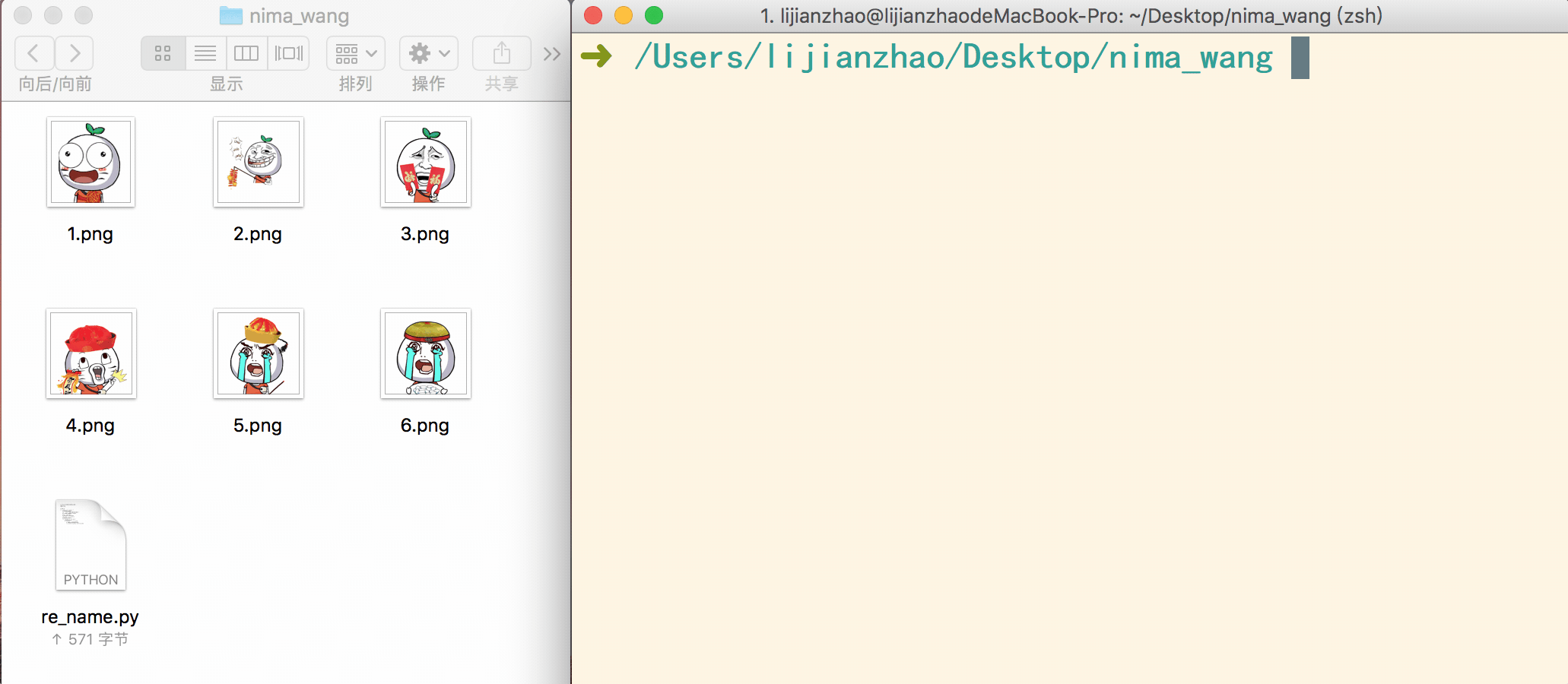Django model select的多种用法详解
《Django model update的各种用法介绍》文章介绍了Django model的各种update操作,这篇文章就是她的姊妹篇,详细介绍Django model select的用法,配以对应MySQL的查询语句,理解起来更轻松。
基本操作
# 获取所有数据,对应SQL:select * from User User.objects.all() # 匹配,对应SQL:select * from User where name = '运维咖啡吧' User.objects.filter(name='运维咖啡吧') # 不匹配,对应SQL:select * from User where name != '运维咖啡吧' User.objects.exclude(name='运维咖啡吧') # 获取单条数据(有且仅有一条,id唯一),对应SQL:select * from User where id = 724 User.objects.get(id=123)
常用操作
# 获取总数,对应SQL:select count(1) from User
User.objects.count()
# 获取总数,对应SQL:select count(1) from User where name = '运维咖啡吧'
User.objects.filter(name='运维咖啡吧').count()
# 大于,>,对应SQL:select * from User where id > 724
User.objects.filter(id__gt=724)
# 大于等于,>=,对应SQL:select * from User where id >= 724
User.objects.filter(id__gte=724)
# 小于,<,对应SQL:select * from User where id < 724
User.objects.filter(id__lt=724)
# 小于等于,<=,对应SQL:select * from User where id <= 724
User.objects.filter(id__lte=724)
# 同时大于和小于, 1 < id < 10,对应SQL:select * from User where id > 1 and id < 10
User.objects.filter(id__gt=1, id__lt=10)
# 包含,in,对应SQL:select * from User where id in (11,22,33)
User.objects.filter(id__in=[11, 22, 33])
# 不包含,not in,对应SQL:select * from User where id not in (11,22,33)
User.objects.exclude(id__in=[11, 22, 33])
# 为空:isnull=True,对应SQL:select * from User where pub_date is null
User.objects.filter(pub_date__isnull=True)
# 不为空:isnull=False,对应SQL:select * from User where pub_date is not null
User.objects.filter(pub_date__isnull=True)
# 匹配,like,大小写敏感,对应SQL:select * from User where name like '%sre%',SQL中大小写不敏感
User.objects.filter(name__contains="sre")
# 匹配,like,大小写不敏感,对应SQL:select * from User where name like '%sre%',SQL中大小写不敏感
User.objects.filter(name__icontains="sre")
# 不匹配,大小写敏感,对应SQL:select * from User where name not like '%sre%',SQL中大小写不敏感
User.objects.exclude(name__contains="sre")
# 不匹配,大小写不敏感,对应SQL:select * from User where name not like '%sre%',SQL中大小写不敏感
User.objects.exclude(name__icontains="sre")
# 范围,between and,对应SQL:select * from User where id between 3 and 8
User.objects.filter(id__range=[3, 8])
# 以什么开头,大小写敏感,对应SQL:select * from User where name like 'sh%',SQL中大小写不敏感
User.objects.filter(name__startswith='sre')
# 以什么开头,大小写不敏感,对应SQL:select * from User where name like 'sh%',SQL中大小写不敏感
User.objects.filter(name__istartswith='sre')
# 以什么结尾,大小写敏感,对应SQL:select * from User where name like '%sre',SQL中大小写不敏感
User.objects.filter(name__endswith='sre')
# 以什么结尾,大小写不敏感,对应SQL:select * from User where name like '%sre',SQL中大小写不敏感
User.objects.filter(name__iendswith='sre')
# 排序,order by,正序,对应SQL:select * from User where name = '运维咖啡吧' order by id
User.objects.filter(name='运维咖啡吧').order_by('id')
# 多级排序,order by,先按name进行正序排列,如果name一致则再按照id倒叙排列
User.objects.filter(name='运维咖啡吧').order_by('name','-id')
# 排序,order by,倒序,对应SQL:select * from User where name = '运维咖啡吧' order by id desc
User.objects.filter(name='运维咖啡吧').order_by('-id')
进阶操作
# limit,对应SQL:select * from User limit 3;
User.objects.all()[:3]
# limit,取第三条以后的数据,没有对应的SQL,类似的如:select * from User limit 3,10000000,从第3条开始取数据,取10000000条(10000000大于表中数据条数)
User.objects.all()[3:]
# offset,取出结果的第10-20条数据(不包含10,包含20),也没有对应SQL,参考上边的SQL写法
User.objects.all()[10:20]
# 分组,group by,对应SQL:select username,count(1) from User group by username;
from django.db.models import Count
User.objects.values_list('username').annotate(Count('id'))
# 去重distinct,对应SQL:select distinct(username) from User
User.objects.values('username').distinct().count()
# filter多列、查询多列,对应SQL:select username,fullname from accounts_user
User.objects.values_list('username', 'fullname')
# filter单列、查询单列,正常values_list给出的结果是个列表,里边里边的每条数据对应一个元组,当只查询一列时,可以使用flat标签去掉元组,将每条数据的结果以字符串的形式存储在列表中,从而避免解析元组的麻烦
User.objects.values_list('username', flat=True)
# int字段取最大值、最小值、综合、平均数
from django.db.models import Sum,Count,Max,Min,Avg
User.objects.aggregate(Count(‘id'))
User.objects.aggregate(Sum(‘age'))
时间字段
# 匹配日期,date
User.objects.filter(create_time__date=datetime.date(2018, 8, 1))
User.objects.filter(create_time__date__gt=datetime.date(2018, 8, 2))
# 匹配年,year
User.objects.filter(create_time__year=2018)
User.objects.filter(create_time__year__gte=2018)
# 匹配月,month
User.objects.filter(create_time__month__gt=7)
User.objects.filter(create_time__month__gte=7)
# 匹配日,day
User.objects.filter(create_time__day=8)
User.objects.filter(create_time__day__gte=8)
# 匹配周,week_day
User.objects.filter(create_time__week_day=2)
User.objects.filter(create_time__week_day__gte=2)
# 匹配时,hour
User.objects.filter(create_time__hour=9)
User.objects.filter(create_time__hour__gte=9)
# 匹配分,minute
User.objects.filter(create_time__minute=15)
User.objects.filter(create_time__minute_gt=15)
# 匹配秒,second
User.objects.filter(create_time__second=15)
User.objects.filter(create_time__second__gte=15)
# 按天统计归档
today = datetime.date.today()
select = {'day': connection.ops.date_trunc_sql('day', 'create_time')}
deploy_date_count = Task.objects.filter(
create_time__range=(today - datetime.timedelta(days=7), today)
).extra(select=select).values('day').annotate(number=Count('id'))
Q 的使用
Q对象可以对关键字参数进行封装,从而更好的应用多个查询,可以组合&(and)、|(or)、~(not)操作符。
例如下边的语句
from django.db.models import Q User.objects.filter( Q(role__startswith='sre_'), Q(name='公众号') | Q(name='运维咖啡吧') )
转换成SQL语句如下:
select * from User where role like 'sre_%' and (name='公众号' or name='运维咖啡吧')
通常更多的时候我们用Q来做搜索逻辑,比如前台搜索框输入一个字符,后台去数据库中检索标题或内容中是否包含
_s = request.GET.get('search')
_t = Blog.objects.all()
if _s:
_t = _t.filter(
Q(title__icontains=_s) |
Q(content__icontains=_s)
)
return _t
外键:ForeignKey
表结构:
class Role(models.Model): name = models.CharField(max_length=16, unique=True) class User(models.Model): username = models.EmailField(max_length=255, unique=True) role = models.ForeignKey(Role, on_delete=models.CASCADE)
正向查询:
# 查询用户的角色名
_t = User.objects.get(username='运维咖啡吧')
_t.role.name
反向查询:
# 查询角色下包含的所有用户
_t = Role.objects.get(name='Role03')
_t.user_set.all()
另一种反向查询的方法:
_t = Role.objects.get(name='Role03')
# 这种方法比上一种_set的方法查询速度要快
User.objects.filter(role=_t)
第三种反向查询的方法:
如果外键字段有related_name属性,例如models如下:
class User(models.Model): username = models.EmailField(max_length=255, unique=True) role = models.ForeignKey(Role, on_delete=models.CASCADE,related_name='roleUsers')
那么可以直接用related_name属性取到某角色的所有用户
_t = Role.objects.get(name = 'Role03')
_t.roleUsers.all()
M2M:ManyToManyField
表结构:
class Group(models.Model):
name = models.CharField(max_length=16, unique=True)class User(models.Model):
username = models.CharField(max_length=255, unique=True)
groups = models.ManyToManyField(Group, related_name='groupUsers')
正向查询:
# 查询用户隶属组
_t = User.objects.get(username = '运维咖啡吧')
_t.groups.all()
反向查询:
# 查询组包含用户
_t = Group.objects.get(name = 'groupC')
_t.user_set.all()
同样M2M字段如果有related_name属性,那么可以直接用下边的方式反查
_t = Group.objects.get(name = 'groupC')
_t.groupUsers.all()
get_object_or_404
正常如果我们要去数据库里搜索某一条数据时,通常使用下边的方法:
_t = User.objects.get(id=734)
但当id=724的数据不存在时,程序将会抛出一个错误
abcer.models.DoesNotExist: User matching query does not exist.
为了程序兼容和异常判断,我们可以使用下边两种方式:
方式一:get改为filter
_t = User.objects.filter(id=724)
# 取出_t之后再去判断_t是否存在
方式二:使用get_object_or_404
from django.shortcuts import get_object_or_404
_t = get_object_or_404(User, id=724)
# get_object_or_404方法,它会先调用django的get方法,如果查询的对象不存在的话,则抛出一个Http404的异常
实现方法类似于下边这样:
from django.http import Http404 try: _t = User.objects.get(id=724) except User.DoesNotExist: raise Http404 get_or_create
顾名思义,查找一个对象如果不存在则创建,如下:
object, created = User.objects.get_or_create(username='运维咖啡吧')
返回一个由object和created组成的元组,其中object就是一个查询到的或者是被创建的对象,created是一个表示是否创建了新对象的布尔值
实现方式类似于下边这样:
try: object = User.objects.get(username='运维咖啡吧') created = False exception User.DoesNoExist: object = User(username='运维咖啡吧') object.save() created = True returen object, created
执行原生SQL
Django中能用ORM的就用它ORM吧,不建议执行原生SQL,可能会有一些安全问题,如果实在是SQL太复杂ORM实现不了,那就看看下边执行原生SQL的方法,跟直接使用pymysql基本一致了
from django.db import connection
with connection.cursor() as cursor:
cursor.execute('select * from accounts_User')
row = cursor.fetchall()
return row
注意这里表名字要用app名+下划线+model名的方式


